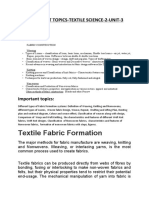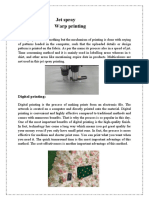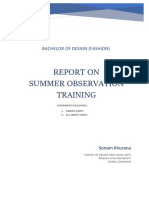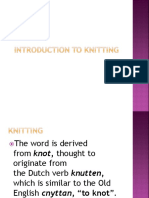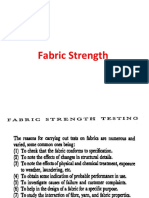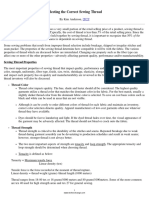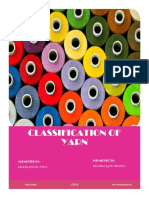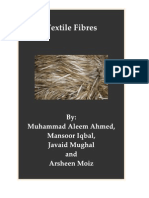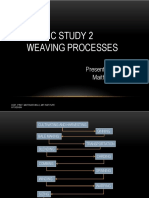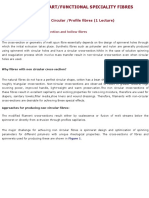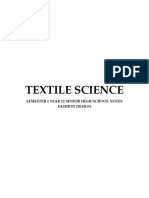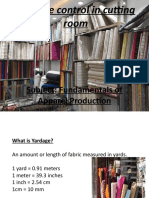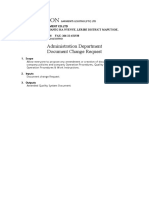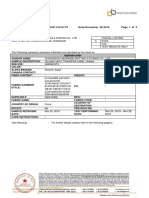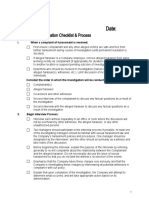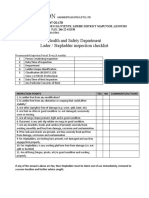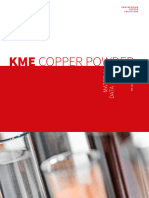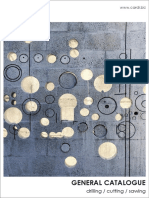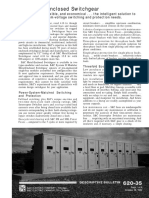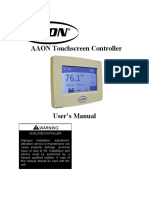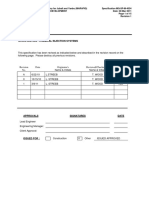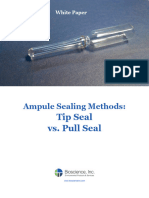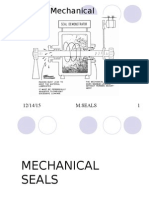0% found this document useful (0 votes)
808 views17 pagesIntroduction To Weaving
Woven fabrics are produced by interlacing warp yarns that run lengthwise with weft yarns that run crosswise. Yarn preparation involves processes like winding, warping, and sizing to strengthen yarns before weaving. Weaving involves three basic motions - shedding to separate warp yarns, picking to pass the weft, and beating up to push the weft into place. Key parameters that characterize woven fabrics include yarn count, ends and picks per inch, grammage, width, weave structure, and fiber composition. These parameters influence fabric properties such as strength, thickness, stability, and feel.
Uploaded by
JahaziCopyright
© © All Rights Reserved
We take content rights seriously. If you suspect this is your content, claim it here.
Available Formats
Download as PDF, TXT or read online on Scribd
0% found this document useful (0 votes)
808 views17 pagesIntroduction To Weaving
Woven fabrics are produced by interlacing warp yarns that run lengthwise with weft yarns that run crosswise. Yarn preparation involves processes like winding, warping, and sizing to strengthen yarns before weaving. Weaving involves three basic motions - shedding to separate warp yarns, picking to pass the weft, and beating up to push the weft into place. Key parameters that characterize woven fabrics include yarn count, ends and picks per inch, grammage, width, weave structure, and fiber composition. These parameters influence fabric properties such as strength, thickness, stability, and feel.
Uploaded by
JahaziCopyright
© © All Rights Reserved
We take content rights seriously. If you suspect this is your content, claim it here.
Available Formats
Download as PDF, TXT or read online on Scribd
/ 17







